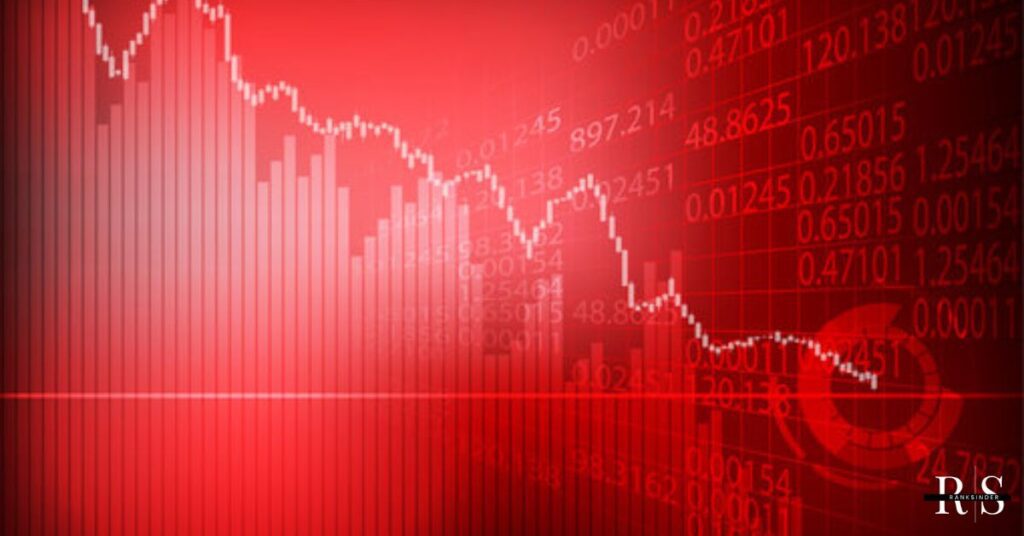The stock market can be unpredictable, with prices often soaring or plummeting in response to economic news, geopolitical events, or even social changes. For investors, especially retail traders, these sudden shifts can feel like a rollercoaster. But imagine a scenario where the market crashes dramatically without warning leading to panic, widespread sell-offs, and financial instability. This is where circuit breaker come in.
These emergency measures are design to protect investors from extreme market volatility. In this article, we’ll dive deep into what stock market circuit breakers are, how they work, their history, and why they are crucial for investors in today’s fast-paced trading environment.
What is a Circuit Breaker in the Stock Market?
A circuit breaker in the stock market is a regulatory measure designed to temporarily halt trading when a sharp decline in stock prices occurs. This pause gives investors time to reassess their positions, cool down any panic, and prevent the market from spiraling into further chaos. Think of it like a safety valve that stops the pressure from building up too high.
Circuit breakers can be triggered in two main ways:
- Market-Wide Circuit Breakers: These affect the entire market, typically triggered when the S&P 500 index falls by a certain percentage in a single day.
- Single-Stock Circuit Breakers: These are specific to individual stocks and prevent extreme price swings in any one security, whether upward or downward.
Both types aim to protect investors and maintain market stability by limiting panic-induced trading. Let’s break down how these work.
How Do Market-Wide Circuit Breakers Work?
Market-wide circuit breakers are design to prevent extreme market volatility across all exchanges. They are automatically triggered when the S&P 500 index drops by a specific percentage. The system works in three levels:
- Level 1: A 7% drop in the S&P 500 triggers a 15-minute trading halt.
- Level 2: A 13% drop triggers another 15-minute halt.
- Level 3: A 20% drop halts trading for the rest of the day.
Level 1 & Level 2 Circuit Breakers:
If a market-wide circuit breaker is triggered during regular trading hours (9:30 AM to 4:00 PM ET), trading halts for 15 minutes, giving investors a chance to absorb the news and make decisions without the emotional stress of continuous price fluctuations. However, if the market falls after 3:25 PM, no halt is imposed, as the market is near its closing time.
Level 3 Circuit Breaker:
A Level 3 circuit breaker is the most severe. When the market drops 20%, trading ceases for the remainder of the trading day, stopping further panic selling and market instability.
Stock Market Circuit Breaker History:
The concept of circuit breakers was introduced after Black Monday on October 19, 1987, when the Dow Jones Industrial Average (DJIA) plummeted by nearly 23%. This event made it clear that markets needed safeguards to prevent such massive, chaotic sell-offs.
Since then, the stock market circuit breaker rules have evolved, with several modifications based on feedback from past crises like the 2020 COVID-19 crash, where circuit breakers were triggered multiple times in March.
Stock Market Circuit Breaker Today:
In the aftermath of these crises, the circuit breaker system continues to evolve to adapt to market conditions. As of today, these measures remain a crucial part of the regulatory framework for stock exchanges like the New York Stock Exchange (NYSE) and the Nasdaq.
Understanding Single-Stock Circuit Breakers (Limit Up-Limit Down Mechanism)
While market-wide circuit breakers halt trading across all stocks, individual stock circuit breakers focus on specific securities. The Limit Up-Limit Down (LULD) mechanism is the primary tool for regulating price volatility on individual stocks.
How LULD Works:
When a stock price moves sharply within a short time frame—either up or down—its trading can be paused. This prevents large price swings that could lead to chaotic sell-offs or artificial price inflation. The price bands (above and below the stock’s average price over the last five minutes) define when a halt occurs. If the stock price stays outside of this band for 15 seconds, trading pauses for 5 minutes.
Stock Market Circuit Breaker Individual Stocks:
For Tier 1 stocks (e.g., those listed in the S&P 500), the price bands are set at 5%, 10%, and 20%. For Tier 2 stocks, these thresholds are wider, adjusting for lower-priced stocks.
Example: If a stock priced at $100 moves by more than 5%, the LULD rule would trigger a pause in trading.
Nasdaq Circuit Breaker Rules:
The Nasdaq circuit breaker system works similarly, but with a focus on stocks traded on the Nasdaq exchange. The thresholds for triggering a Nasdaq circuit breaker are based on a percentage of the stock’s price, just like the broader market system.
Stock Market Circuit Breaker Rules: Key Takeaways for Investors
So, what should you, as an investor, take away from all this?
- Protection Against Panic Selling: Circuit breakers prevent the market from crashing in a panicked, uncontrolled manner. By halting trading, they allow time for investors to step back and make informed decisions.
- More Fair Trading: The individual stock circuit breaker rules also help prevent manipulation or extreme price movements, ensuring that stocks are traded at reasonable prices.
- Historical Precedents: Looking back at the stock market circuit breaker history, from Black Monday to the 2020 crash, you can see that these measures have prevented further losses and restored confidence in times of crisis.
The Role of Circuit Breakers During Market Crashes (Updated for 2025)
Circuit breakers have proven their worth in preventing market crashes from spiraling out of control. Their role in halting trading temporarily allows investors to regain composure, absorb information, and reassess their positions. Let’s explore how these measures have been essential during major market crashes over the years, including Black Monday, the 2008 financial crisis, the COVID-19 pandemic in 2020, and more recent events.
Case Study: The 2020 COVID-19 Market Crash
When the COVID-19 pandemic shook the global economy, the stock market reacted with extreme volatility. Fear of widespread lockdowns, unemployment, and a global recession led to massive sell-offs in March 2020. In response, stock market circuit breakers were triggered multiple times:
- March 9, 2020: The S&P 500 dropped 7% at the open, triggering the Level 1 circuit breaker. This marked the first trading halt of the crisis.
- March 12, 2020: The market experienced another 7% drop, triggering a second Level 1 circuit breaker.
- March 16, 2020: The S&P 500 fell 13%, activating a Level 2 circuit breaker.
- March 18, 2020: By this point, the market had dropped more than 20%, triggering a Level 3 circuit breaker that halted trading for the remainder of the day.
These halts provided temporary relief and time for the market to absorb the sudden surge of negative information, allowing investors to reassess the situation. The circuit breakers helped prevent a complete collapse and restored confidence in the market.
The 2021-2022 Volatility & Inflation Fears
In the years following the COVID-19 pandemic, the market faced several periods of volatility driven by rising inflation, supply chain disruptions, and geopolitical tensions. In 2022, for example, fears of inflation and interest rate hikes led to major fluctuations, particularly in growth stocks and technology sectors.
Though circuit breakers weren’t triggered during these periods, the Nasdaq circuit breaker system was closely monitored, and there were several instances when individual stocks saw sharp price swings due to fear of worsening economic conditions. The role of circuit breakers in limiting extreme volatility during these uncertain times cannot be overstated.
2023-2025: The Ongoing Role of Circuit Breakers
As of 2025, circuit breakers continue to be an essential component of stock market regulation, helping maintain stability during periods of geopolitical uncertainty, economic downturns, or pandemic-like events.
- In 2023, markets experienced sharp declines in response to geopolitical tensions, particularly surrounding the conflict between Russia and Ukraine. This led to a surge in energy prices and economic instability in Europe. While circuit breakers were not triggered across the entire market, the Nasdaq circuit breaker list showed several instances where individual stocks in the energy sector and emerging markets saw significant volatility, leading to trading halts for those specific securities.
- The 2024 market saw renewed concerns over China’s economic slowdown and US debt ceiling debates, causing significant swings in major indices. Although no broad market-wide halts occurred, individual stocks saw a flurry of limit-up, limit-down triggers.
- 2025 has already experienced heightened levels of volatility, with concerns over inflation and slowing growth in the US economy. As economic reports continue to show signs of stagnation and political instability, the role of circuit breakers has become even more critical in ensuring that short-term panic does not result in long-term market instability.
Why Circuit Breakers Matter During Crises:
- Prevents Panic Selling: When the market drops significantly, panic can spread quickly. Circuit breakers slow this process by giving traders and investors time to cool off.
- Reduces Extreme Volatility: In times of crisis, rapid price swings can damage investor confidence. Circuit breakers provide stability by limiting these drastic movements.
- Restores Investor Confidence: After a brief trading halt, investors have the opportunity to reassess and make more informed decisions, helping restore trust in the market.
- Limits Systemic Risk: By halting trading, circuit breakers prevent the worst effects of cascading sell-offs that can lead to systemic risk across the entire financial system.
The Future of Circuit Breakers: What to Expect in 2025 and Beyond
As markets continue to evolve, it’s likely that circuit breaker mechanisms will adapt to future market conditions. In 2025, with technological advancements and growing participation in retail trading, these safeguards will likely be further refined to address concerns like algorithmic trading and flash crashes.
Criticisms and Limitations of Circuit Breakers
Despite their benefits, circuit breakers are not without criticism. Some analysts argue that these measures can create artificial barriers, which can lead to disruptions in market liquidity.
Critics argue:
- Increased volatility: After a circuit breaker pause, stock prices may see a sudden surge or drop once trading resumes.
- Halted orders: Some investors believe that circuit breakers may hinder them from taking quick action during times of crisis.
- Artificial stability: Some market purists argue that allowing markets to correct on their own is a better solution than interference via circuit breakers.
Nevertheless, these tools remain vital in maintaining stability, especially during times of uncertainty.
Conclusion
In conclusion, stock market circuit breakers serve as a crucial safeguard in maintaining market stability. Whether it’s through halting market-wide trading during extreme downturns or pausing individual stocks that experience erratic price movements, circuit breakers help protect investors from irrational panic and limit excessive volatility.
By understanding how these measures work, you can better navigate turbulent market conditions and make informed decisions. As markets continue to evolve, circuit breakers will likely remain a key component in safeguarding investments.

Zayn, the founder of Ranksinder.info, is passionate about delivering research-based, informative, and engaging content in Technology, Fashion, Finance, Biography, Travel, and Automotive. With a vision to make Ranksinder.info a trusted knowledge hub, Zayn focuses on quality content, accuracy, and user experience.







